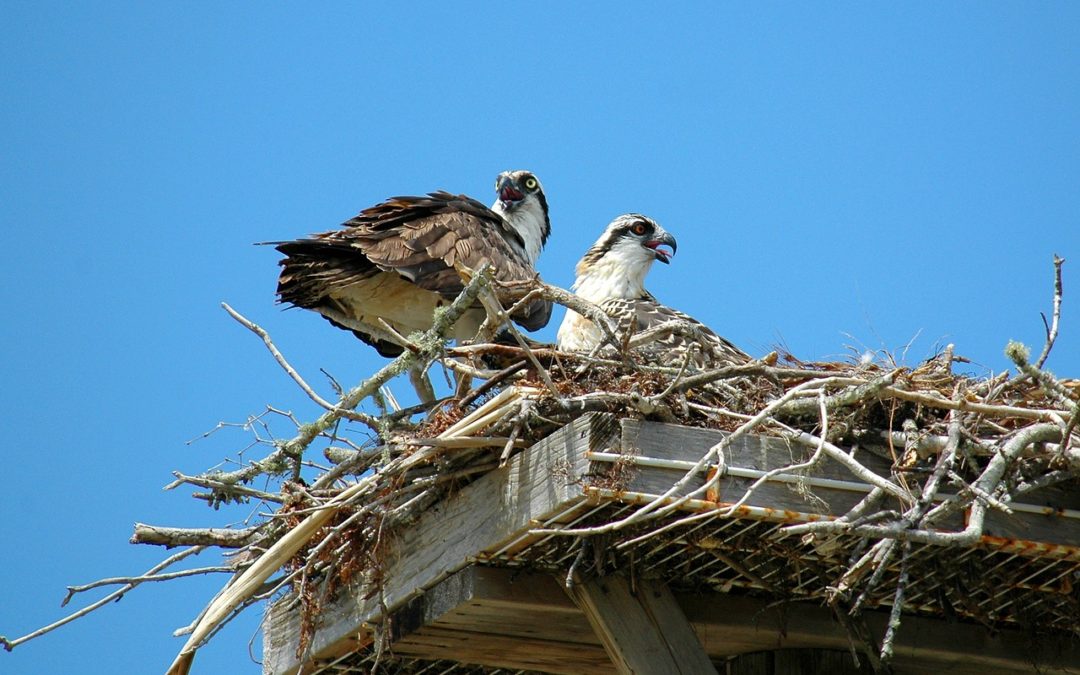
by jhwildlife | Apr 29, 2018 | Blog, Nature Mapping Jackson Hole
By Sarah Ramirez, Teton Raptor Center Research Technician

It’s nearly impossible to drive around the Jackson area without seeing a wooden platform attached to a powerpole or freestanding. This summer, Teton Raptor Center will utilize citizen scientists to monitor over 60 osprey platforms throughout Teton County (excluding Grand Teton National Park’s, as they monitor their own). These platforms will be checked once a month, starting in April and finishing in August, and will determine occupancy by Canada Geese and nesting productivity of Osprey. Data collected in past years by Nature Mapping Jackson Hole volunteers has been integrated into the ongoing Teton Raptor Center-led project.
In the last few years, Canada Geese have been nesting in osprey platforms in Teton County. Since they migrate into the valley weeks, if not a month, before osprey do, they generally nest beforehand and take claim to these platforms. Canada Geese prefer to nest in open, unobstructed areas, and these platforms most likely give their eggs/goslings a better chance against mammalian and reptilian predators. Teton Raptor Center has developed a nesting platform that tilts downward while the geese are looking to nest, and are pulled flat once the Osprey return to the valley. With our monitoring activities, it is important to note how many and which nesting platforms are being used by Canada Geese, so we can correctly place tilted platforms in needed areas.
Keep an eye out for osprey nesting this season! Regardless of where you see Osprey, Nature Mapping their locations and behaviors can help us learn more about their needs and preferences, ensuring that they thrive here into the future.
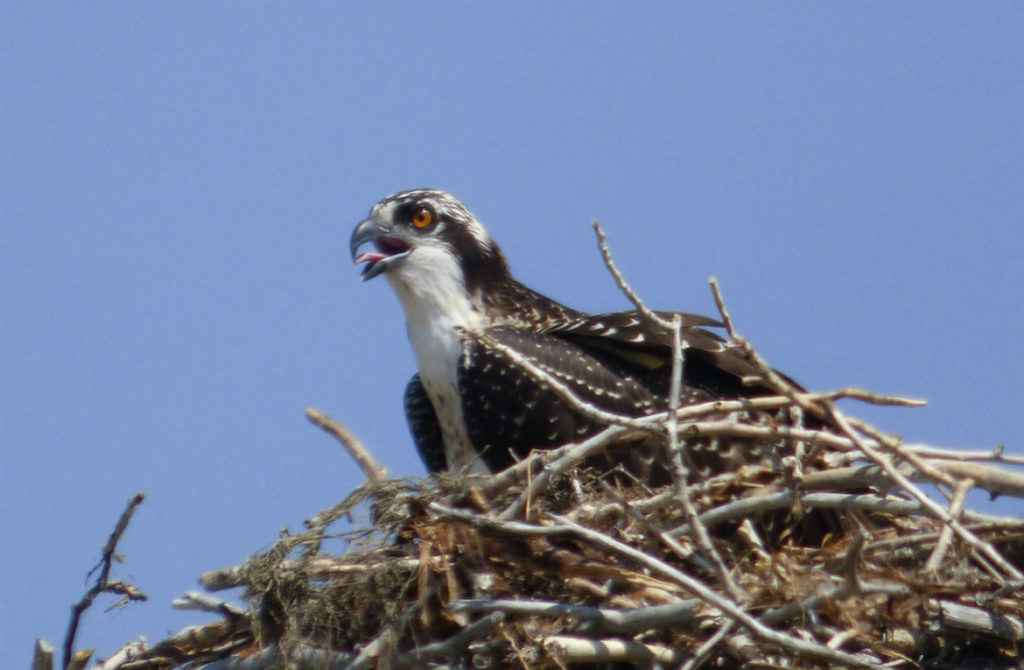
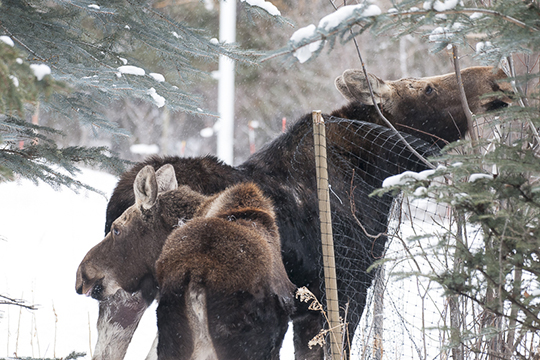
by jhwildlife | Feb 28, 2018 | Blog, Nature Mapping Jackson Hole
by Frances Clark

Two moose for the count by Gigi Halloran
First the stats, then the fun.
We had a windy day with off-and-on light snow, pretty good visibility, and temperature ranging from around 8 degrees to 18 degrees Farenheit in the Jackson area. We had 80 Moose Day volunteers on 33 teams covering 53 different areas. Unfortunately 14 teams struck out…no moose. This is always disappointing to the hardy observers, but “0” is important data, as well. We can get a feel for where the moose don’t go regularly over the years or the variability of their movements.
So where did the moose show up? Wilson once again had a high proportion: about 27 in different clusters and pairs. Grand Teton National Park from Kelly a bit north and west over through the Solitude development had approximately 25. Another eight were seen in the Jackson Hole Golf and Tennis area, including three spotted by Bryan, a guest staying with Randy Reedy. Bryan was getting into his car while Randy was out scouting! Volunteer time: five minutes. Jason Wilmot of USFS and partner saw 15 moose snowmobiling out to the end of the Gros Ventre road. Last year the team saw a remarkable high of 57 moose. Sarah Dewy and Steve Kilpatrick saw five moose in the Buffalo Valley area vs. 20 last year, and an overall low for that territory. The north and southern extremes of our count area had no moose. The total number of moose is 94, but we will double check for a couple of possible overlaps. This number is roughly average–87 is the average count, excluding two high years (2011 – 124 moose; 2017 – 172 moose –both years with alot of snow).
The most observed moose was one browsing and then sleeping along a row of willows just west of Stilson in Wilson. Over eight people reported seeing it there. We will count it once.
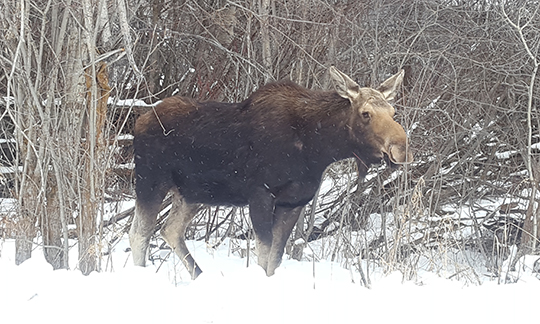
Eight mappers saw this moose, but it was counted once. By Amy Conway.
Other Highlights of the Day Besides Moose:
Several observers saw bald eagles in courtship. Bernie, Diane and Alice saw one pair of adults where the male bird was about 75% smaller than the female–this was an extreme example of a typical size difference in raptors females and males.
That team also sighted Townsend’s Solitaire and Snow Buntings on their territory south of Jackson. Morgan Graham took a picture of a Northern Shrike down in the same vicinity.
Trumpeter Swans, Barrow’s Golden-eyes, Mallards and mergansers were treats along the creeks and rivers.
Two groups of 15-16 elk were seen in different corners of Wilson. Pine Grosbeaks, European Starlings, woodpeckers, Great Blue Herons and coyotes also delighted Nature Mappers, especially those who did not see moose!
Thank you all for keeping your eyes out for moose in Moose Day 2018! The moose thank you, we at Nature Mapping Jackson Hole thank you.
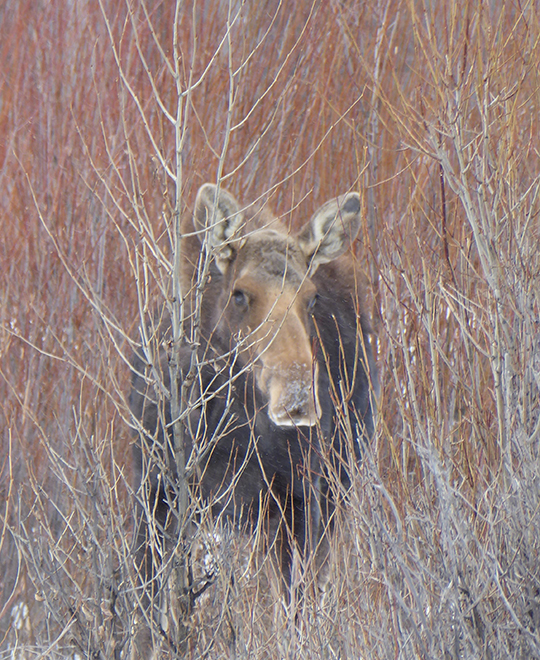
Moose hiding but counted on Moose Day by Kathy McCurdy
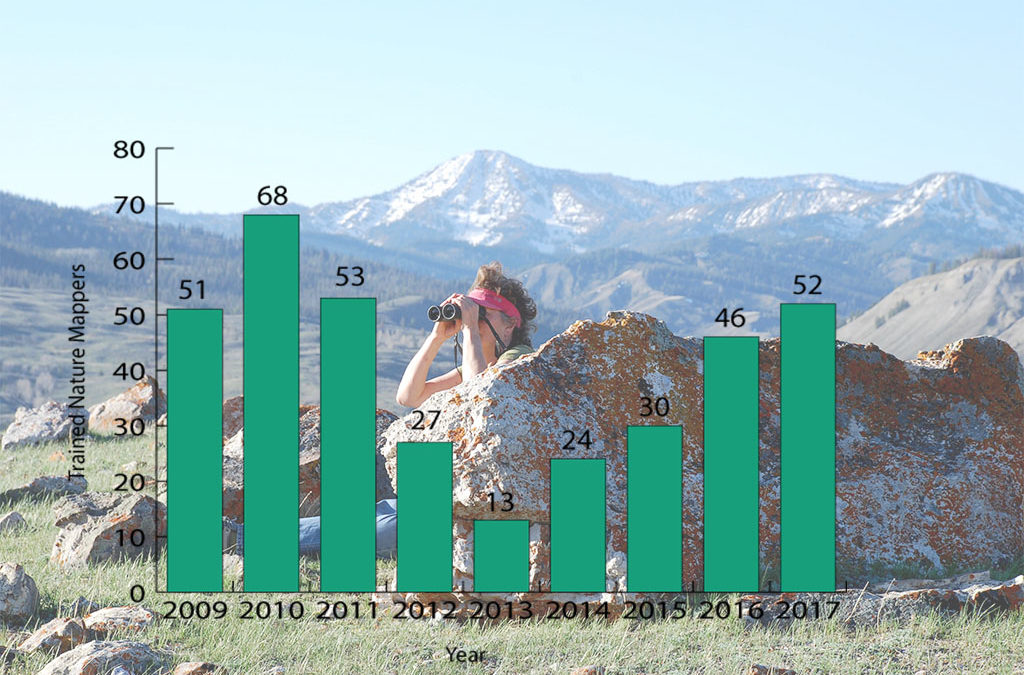
by jhwildlife | Dec 23, 2017 | Blog, Nature Mapping Jackson Hole
Nine Years of Data: What are We Starting to Learn?
Over the past nine years, 464 people have been trained as certified Nature Mappers and have entered 47,829 observations into the Nature Mapping Jackson Hole program’s central database.
All this effort is filling wildlife observation and distribution needs not already covered by state and federal agencies or local research organizations. Furthermore, together we are fostering a community that looks deeper into the meanings of science and citizenship – therefore, realizing that to participate in the building of knowledge about how our world works, can have profound implications for the way we, Jackson Hole, relate to our natural environment and shape its future.
Thank you for getting involved in the experiences of seeing, feeling, and understanding nature in all its amazingness through Nature Mapping Jackson Hole.
Below is a current snapshot of our database (Note: numbers reflect entries made in the database as of December 7, 2017). In the coming year, JHWF will take a deeper look into the database to better understand data related to volunteer participation and to identify potential increases or declines in any species over time. Stay tuned, there is more to come!
2017 Observations by Project:
- Project Backyard – 2,611
- Casual Observations – 3,244
- Moose Day – 166
2017 Observations by Species:
- Reptiles and Amphibians – 71
- Birds – 3,806
- Mammals – 2,126

Figure 1. Total number of active Nature Mappers by year (2009-2017)

Figure 2. Number of newly trained Nature Mappers by year (2009-2017)
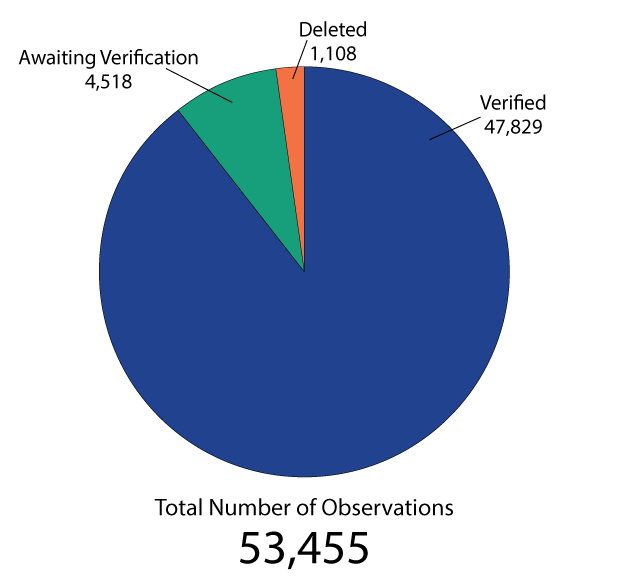
Figure 3. Total number of observations by status in the Nature Mapping Database
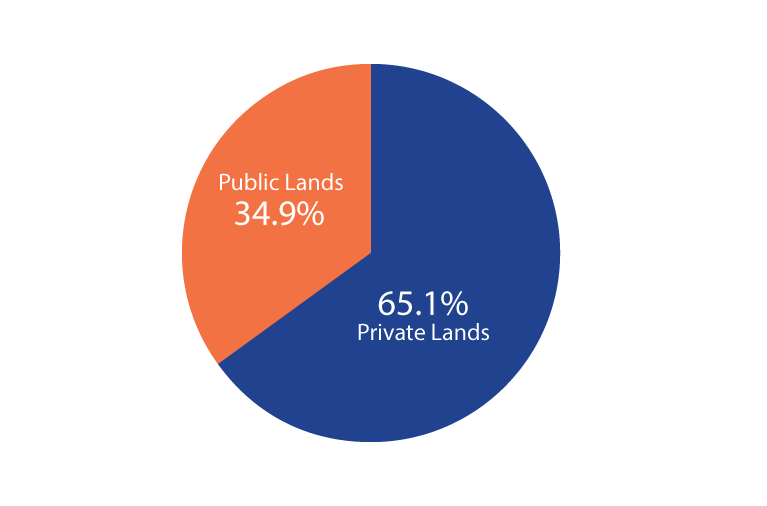
Figure 4. Percentage of Nature Mapping observations that are located on public vs. private lands (verified observations; 2009-2017)

Figure 5. Total number of species entered by Nature Mappers (includes verified, unverified and deleted observations; 2009-2017)
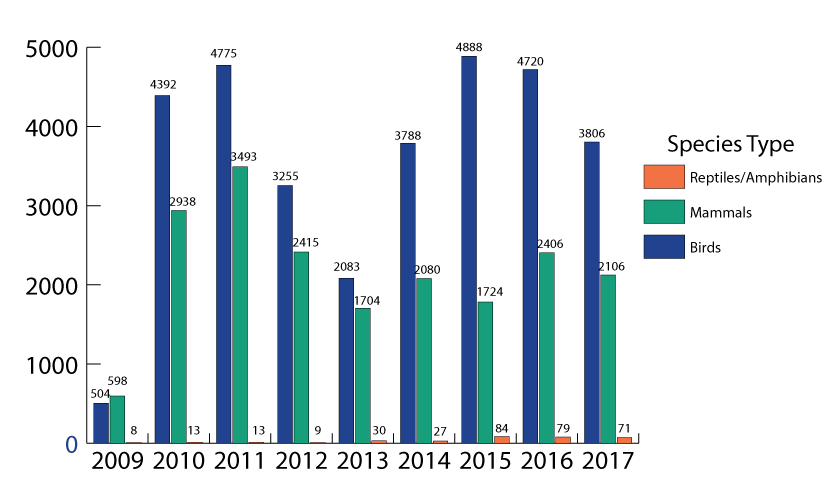
Figure 6. Total number of species by type entered by Nature Mappers (includes verified, unverified and deleted observations; 2009-2017)
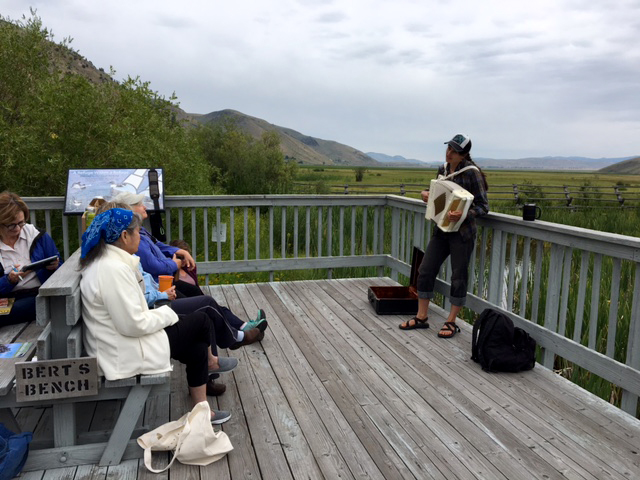
by jhwildlife | Jul 26, 2017 | Blog, Nature Mapping Jackson Hole
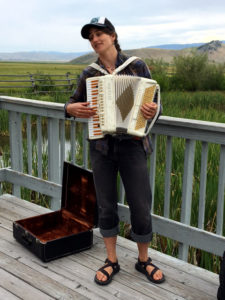 Very recently an exclusive opportunity was made available to all certified Nature Mappers and 13 of them joined JHWF and scientist Anya Tyson on July 25 for a discussion on the Clark’s Nutcracker — a clever bird with a big conservation importance.
Very recently an exclusive opportunity was made available to all certified Nature Mappers and 13 of them joined JHWF and scientist Anya Tyson on July 25 for a discussion on the Clark’s Nutcracker — a clever bird with a big conservation importance.
As the primary seed disperser of the whitebark pine, Clark’s Nutcrackers plays a critical role in our ecosystem (whitebark pine nuts are a key, high-energy food source for grizzly bears). Severe mountain pine beetle outbreaks and an introduced fungus — white pine blister rust — have caused the whitebark pine to decline across much of the northern Rockies. As forest managers attempt to restore and protect these alpine zones unique to places like Jackson Hole, they need more data on how nutcrackers are using our high-elevation forests, which can be challenging to obtain given the difficulty in sending larger numbers of researchers into the field, especially given the backcountry terrain.
For our private scoop on the latest news, we gathered at Bert’s Bench in the Murie Family Park and over a fresh brew of coffee, enjoyed an update from Anya about her citizen science work with students to conduct habitat surveys in relation to observations of Clark’s Nutcrackers in the backcountry. Anya also gave us an update on Dr. Taza Schaming’s research that uses Nature Mapping data alongside other datasets to model which habitat features best predict Clark’s Nutcracker presence in mountain landscapes. Her recommendations to land managers will help guide whitebark pine conservation and restoration efforts.
Keep a look out for this clever bird and enter your observations into the Nature Mapping Jackson Hole database under Casual Observations. Alternatively, for those active with Project Backyard be sure to notice and record if Clark’s are visiting your feeders later in the year.
Every data point logged for Clark’s Nutcracker will be useful for Anya’s project work and Dr. Taza Schaming’s research.
Anya would love to hear of any interesting stories related to your Clark’s Nutcracker observations and she encourages you to email her at: anyamtyson@gmail.com. Learn more about the Clark’s Nutcracker Project here.

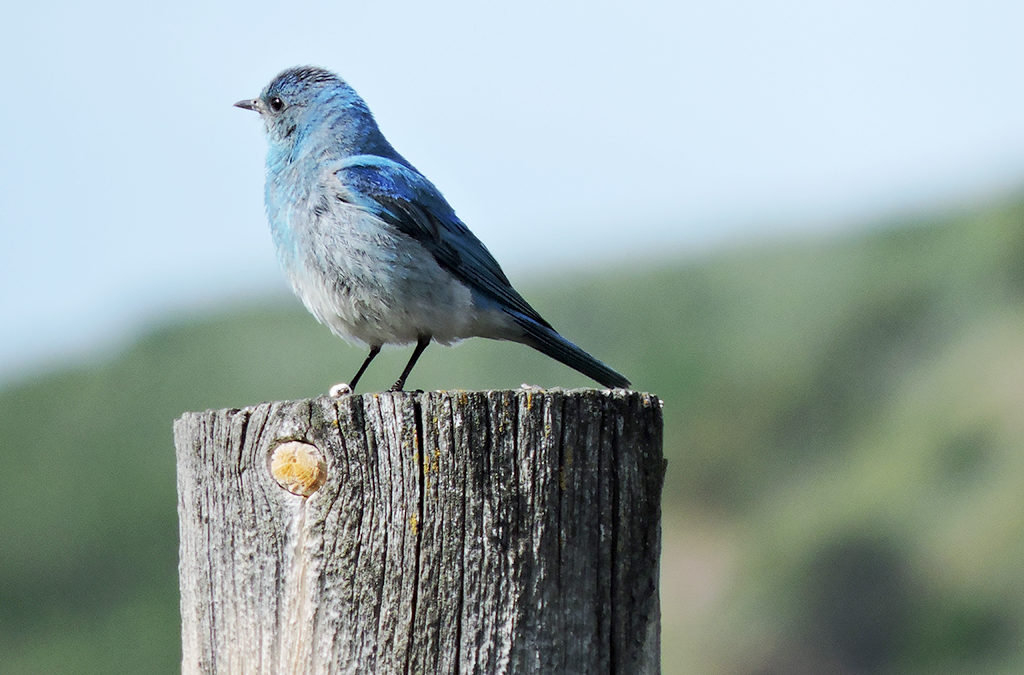
by jhwildlife | Jul 12, 2017 | Blog, Nature Mapping Jackson Hole
As one leaves the town of Jackson and heads north on HWY 89, a trail of nestboxes lines the fencing of the National Elk Refuge. These nestboxes are part of JHWF’s Mountain Bluebird Nestbox Monitoring Project, which is designed to mitigate for extreme habitat loss that has negatively impacted the breeding success of this species. Monitoring work has been conducted for the past 13 years, but this summer we added a new element to the project by hiring bird bander Allison Swan. With help from our volunteers, Allison has banded 98 chicks and 1 female adult since May.
With data collected through banding and the re-sighting of individuals, we will be able to evaluate survival rates of young, dispersal patterns, re-nesting rates, productivity by age, site fidelity, and other measures of population dynamics. This type of information will allow us to understand population status in Jackson Hole and to better inform land management decisions with respect to the Mountain Bluebird.
Almost all chicks born this summer have fledged their nests and now is the time to begin searching for our color-banded birds — 99 in total.
Already several banded birds have been re-sighted through the use of binoculars and spotting scopes. Our first sighting was a juvenile Mountain Bluebird who crossed the highway and was seen in the parking lot of the National Museum of Wildlife Art. Fledglings can fly quite well, but many are still being fed by the adults, which means they will often stay in place long enough to get a good look at colored-bands on their legs.
All Nature Mappers, we need your help re-sighting banded bluebirds! The most important data we need collected is location data and the color band scheme for each bird. Ideally, we would also like to collect additional data on behavior, substrate and plumage.
The color bands are noticeable and folks have been reporting that it is easy to read the colors, especially with use of binoculars. If you do not have binoculars, please stop by the Jackson Hole Wildlife Foundation office and borrow a pair! We have three scopes and two pair of binoculars for volunteers to borrow while conducting observations.
Download our Re-sighting Datasheet here. As you observe and record sightings of this year’s birds note each ones unique color combination. Datasheets should be given to our Associate Director, Kate Gersh at: Kate@jhwildlife.org. We also encourage the sharing of verbal reports by calling our office at: (307) 739-0968.
Thanks for the help!
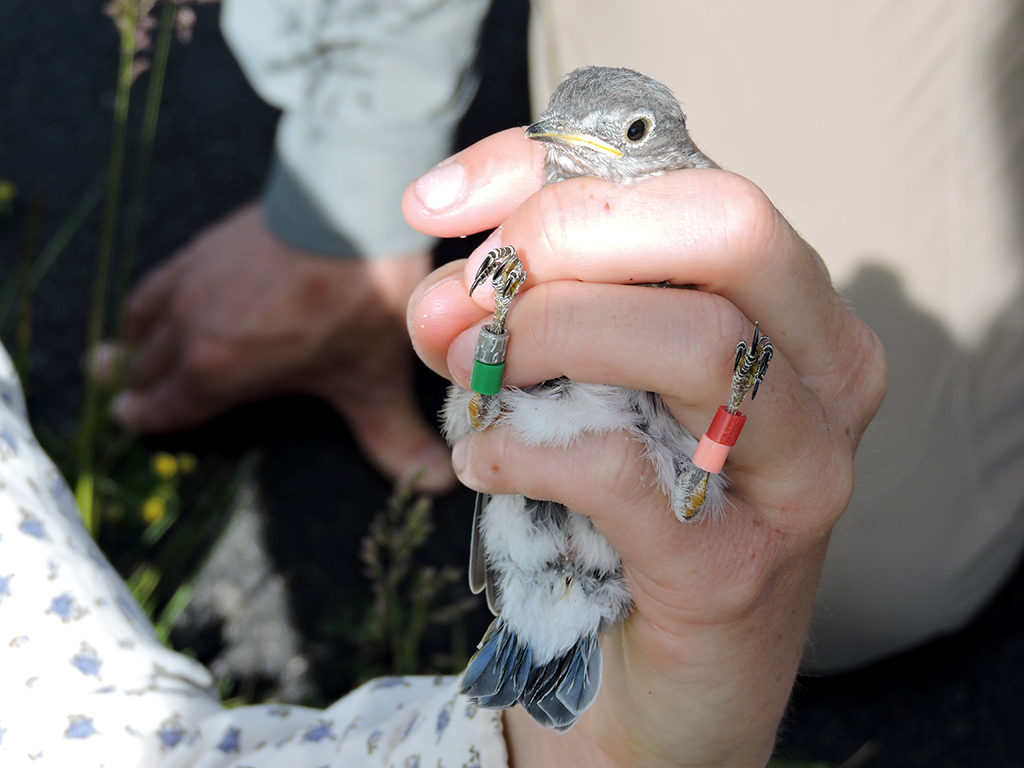















 Very recently an exclusive opportunity was made available to all certified Nature Mappers and 13 of them joined JHWF and scientist Anya Tyson on July 25 for a discussion on the Clark’s Nutcracker — a clever bird with a big conservation importance.
Very recently an exclusive opportunity was made available to all certified Nature Mappers and 13 of them joined JHWF and scientist Anya Tyson on July 25 for a discussion on the Clark’s Nutcracker — a clever bird with a big conservation importance.
